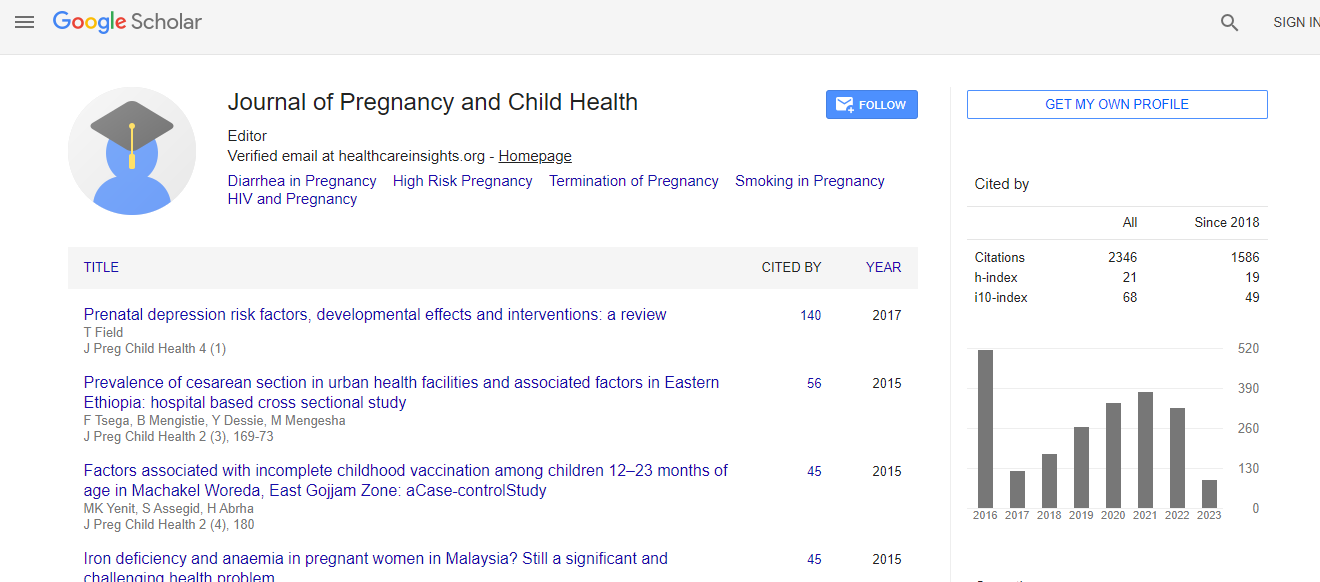Research Article
The Effect of Parity on Labor Induction with Prostaglandin E2 Analogue (Dinoprostone): An Evaluation of 2090 Cases
| Omer Kandemir*, Hulya Dede, Serdar Yalvac, Oya Aldemir, Bulent Yirci, Neslihan Yerebasmaz and Sertac Esin | |
| Etlik Zubeyde Hanim Womens’ Health and Teaching Hospital, Department of Maternal Fetal Medicine, Ankara, Turkey | |
| Corresponding Author : | Omer Kandemir Etlik Zubeyde Hanim Womens’ Health and Teaching Hospital Department of Maternal Fetal Medicine, Ankara, Turkey Tel: +90 312 5674334 Fax: +90 312 238 1819 E-mail:omer.kandemir@gmail.com |
| Received March 16, 2015; Accepted April 13, 2015; Published April 15, 2015 | |
| Citation: Kandemir O, Dede H, Yalvac S, Aldemir O, Yirci B, et al. (2015) The Effect of Parity on Labor Induction with Prostaglandin E2 Analogue (Dinoprostone): An Evaluation of 2090 Cases. J Preg Child Health 2:149. doi: 10.4172/2376-127X.1000149 | |
| Copyright: © 2015 Kandemir O, et al. This is an open-access article distributed under the terms of the Creative Commons Attribution License, which permits unrestricted use, distribution, and reproduction in any medium, provided the original author and source are credited. | |
Abstract
Objective: The aim of this study was to investigate the effect of parity on cervical ripening and labor induction with intra-vaginal slow-release dinoprostone and to determine the safety and efficacy of this medication in a tertiary referral center.
Methods: The medical records of 2090 pregnant women who underwent cervical ripening and induction of labor with Dinoprostone between January 2007 and December 2010 were retrospectively reviewed. All women included in the study had singleton pregnancies greater than 37 gestational weeks and the Bishop score was less than 4. Our induction of labor policy was to use dinoprostone for patients <35 years old and low parity (≤ 2). Ten milligram of intravaginal slow-release dinoprostone was applied vaginally for 24 hours. Nulliparousand multiparous patient results were compared.
Results: One thousand one hundred seventy two nulliparous and 918 multiparous patients were included in the study. Indications for induction of labor were; post-term pregnancy in 67.2%, oligohydramniosis in 11.8 %, severe intrauterine fetal growth restriction in 9.7%, severe gestational hypertension or chronic hypertension or preeclampsia necessitating delivery in 6.8 %, and premature rupture of membranes in 4.4 %. The mean patient age, gestational age, parity and Bishop Score before induction were 25.22 ± 4.9, 40.21 ± 1.2, 1.6 ± 0.4 and 2.47 ± 0.2, respectively. The induction to active phase, active phase to vaginal delivery and induction to vaginal delivery durations for nulliparous and multiparous groups were (7.5 ± 6.3 vs. 6.8 ± 6.0, p=0.012) and (7.7 ± 5.6 vs. 5.8 ± 5.0, p=0.001) and (15.6 ± 7.7 vs. 13.5 ± 5.4, p=0.023), respectively. The delivery rates during the first 24 hours after application of dinoprostone were 65.7 % and 71.5 % for nulliparous and multiparous patients, respectively (p=0,001). In the nulliparous group, the change in Bishop Score was significantly higher than the multiparous patient group (p=0.034). During labor, 31.1% of the patients needed oxytocin augmentation and this was 34.9% in the nulliparous and 26.4% in the multiparous groups (p=0.001). The cesarean delivery rate was higher in the nulliparous group (34.3% vs. 24.9%, p=0.002). The percentage of newborns with 5-minute Apgar scores less than 7 and the percentage of newborns requiring neonatal intensive care unit (NICU) were similar between nulliparous and multiparous groups.
Conclusion: Dinoprostone seems to be an effective agent for induction of labor in patients with an unfavorable cervix for patients <35 years old and with low parity (≤ 2). The induction to vaginal delivery duration is shorter and delivery rate in the first 24 hours is higher in multiparous group. The perinatal outcomes are comparable between groups.

 Spanish
Spanish  Chinese
Chinese  Russian
Russian  German
German  French
French  Japanese
Japanese  Portuguese
Portuguese  Hindi
Hindi 
